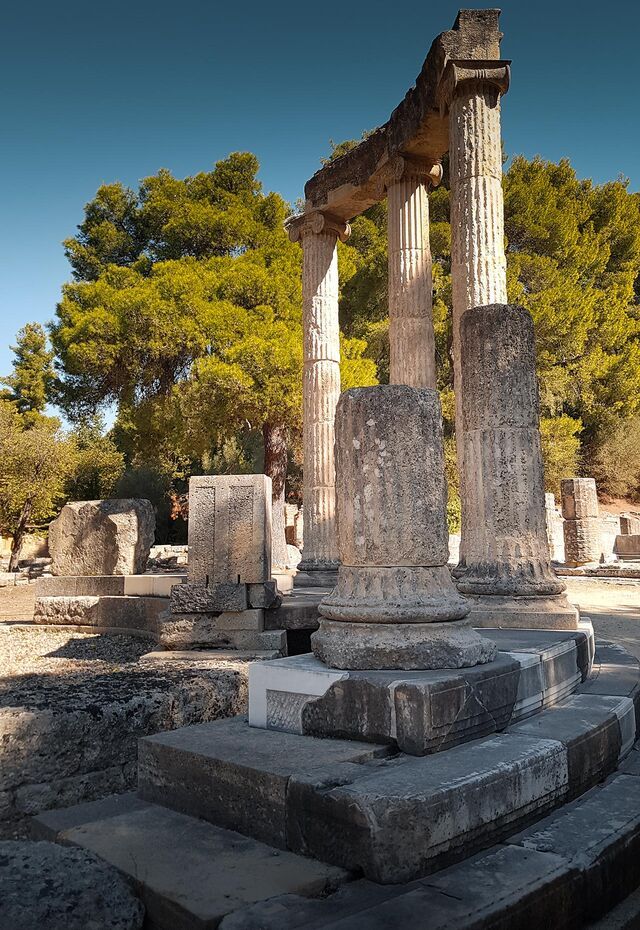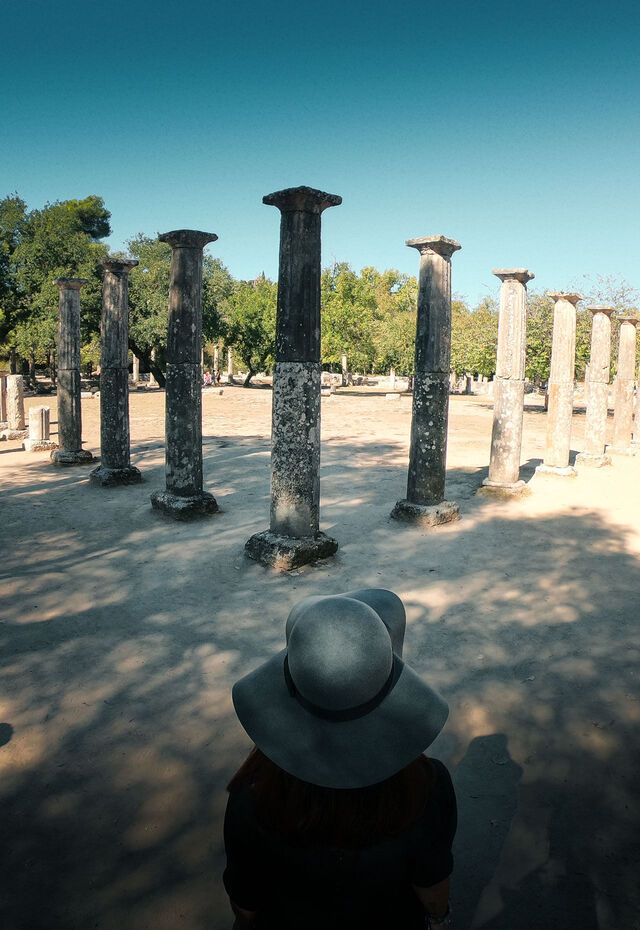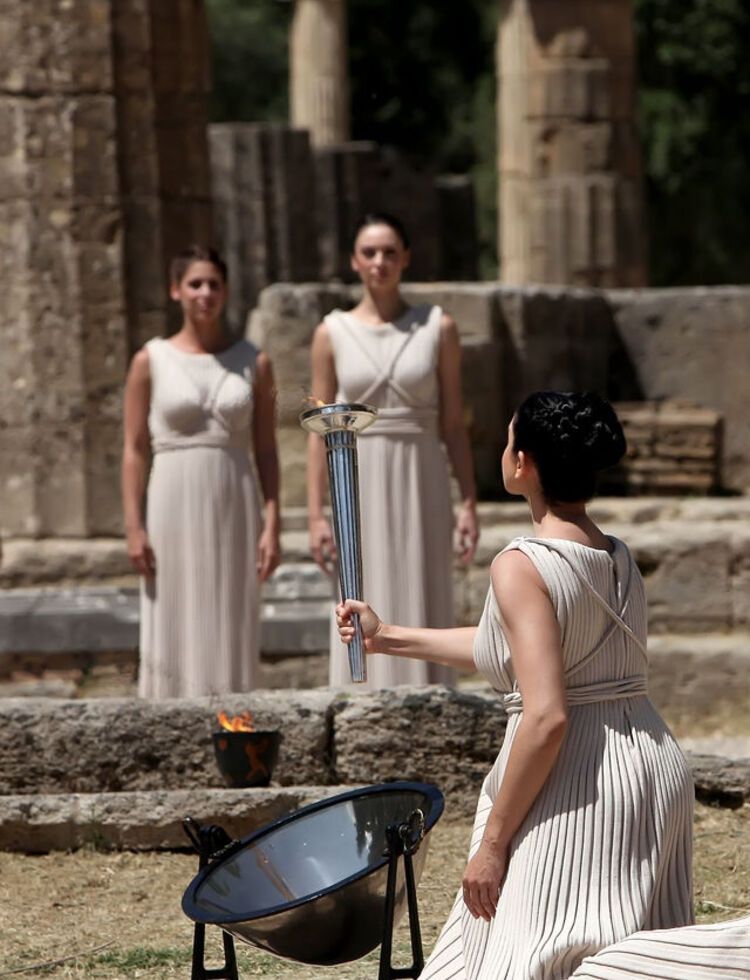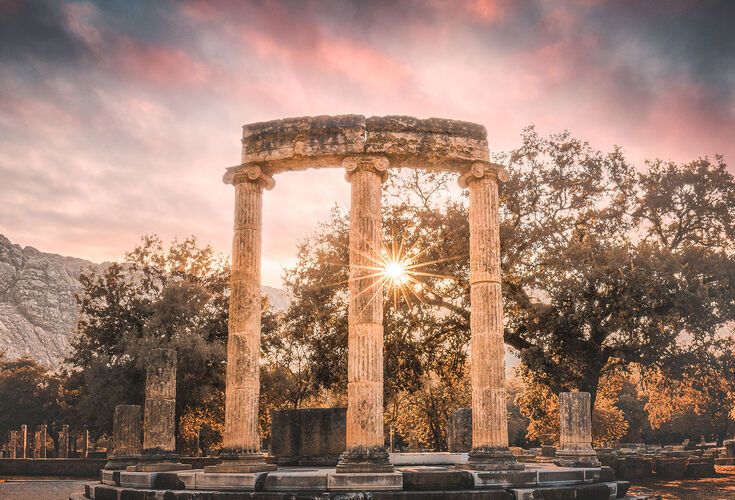Feel the spirit of Ancient Olympia


OVERVIEW
There aren’t many cultural landmarks that you have a feeling for without having visited. The archaeological site of Ancient Olympia is one of them. Capturing all the spirit of the Olympic Games, it’s also the place where the Olympic flame is lit in commemoration of the Games that originated and were held here every four years for a staggering 1,000 years.
Located in the western Peloponnese, Ancient Olympia was one of the most sacred and glorious sanctuaries of the ancient world. And, though only foundations of many of its structures remain, it is still one of the most evocative of Greece’s archaeological sites.
Ancient Olympia strikes that magical balance of appealing to both children and adults in equal measure. You can still feel the spirit of the athletes and the adulation of crowds chanting their names (women and slaves from a nearby hill, of course). And, next to that, the veneration of worshippers in the remains of temples dedicated to Zeus and Hera.
DON'T MISS
The Philippeion
The remains of the only circular building on the site once contained gold-and-ivory-covered statues of Philip of Macedon and his family, including his son Alexander the Great. It was built by Philip to commemorate a victory against a combined army of Athenians and Thebans.
The Ancient Stadium and Archway
Passing through a stone archway, you enter the remains of the Ancient Stadium, once housing more than 45,000 spectators. The mind boggles at being able to line up on the track (measuring 192.27m), just as the finest athletes in the land did thousands of years ago. Nearby are the judges’ seats. On your marks, get set…
The Palaestra
Built in the 3rd century BC, the partly restored Palaestra was where contestants prepared for boxing, wrestling and jumping events.
Pheidias’ Workshop
This is where the legendary sculptor Pheidias created one of his most famous pieces of work – the gargantuan ivory-and-gold statue of Zeus, which became one of the Seven Wonders of the Ancient World.
The Temple of Zeus
The most important building of the Altis (or Sacred Precinct of Zeus) was the immense 5th-century-BC Doric temple dedicated to the king of the gods. It housed Pheidias’ statue of Zeus for more than 800 years. One column of the temple has been restored, allowing us to appreciate its size.
The Temple of Hera
Older still are the remains of the late 7th-century-BC Doric Temple of Hera, in front of which burnt a fire during the Games as a symbol of the fire stolen from the gods by Prometheus. This is where the Olympic flame is lit today.
The Archaeological Museum
Containing artefacts and statues (the most famous of which is Praxiteles’ Hermes), the Archaeological Museum more than does justice to the challenge of putting this extraordinary site’s history and mythology into context.
Archimedes Museum
A wonderful bonus is the Archimedes Museum, dedicated to the greatest mathematician, physicist, engineer, astronomer and inventor of his time.
GET PLANNING
From Athens
- By car: 304km (3hrs40mins)
From Araxos Airport
- By car: 100km (1hr20mins)
From Katakolo Port (for cruise ships)
- By car: 45km (45mins)
- By bus: There are numerous options of companies offering tours of the archaeological site.
- By train - More info
- The archaeological site is open all year round (except national holidays).
- The peak summer months (July-August) are busy and hot so visit early or in the afternoon.
- Opening hours:
Archaeological Site
Seasonal Opening Hours apply.
April-October: Daily 8:00-19:30.
More info here
Museum of Ancient Olympia
More info here
Archimedes Museum
More info here
The best experience is in spring when the olive groves and flowers are in bloom and there’s a wonderful light, adding to the magical aura.
- Autumn
- Spring
- Summer
- Winter
- There’s little shade and the archaeological site is expansive so don’t forget your hat, sunglasses and sunscreen and bring a water bottle.
- Wear comfortable footwear.
- A new canteen is currently being constructed so bring snacks and water.
- There are plenty of hotels and restaurants in the town of Ancient Olympia.
- You can book a guided tour on site.
- The archaeological site is suitable for visitors with disabilities, as is the ground floor of the Archimedes Museum.


